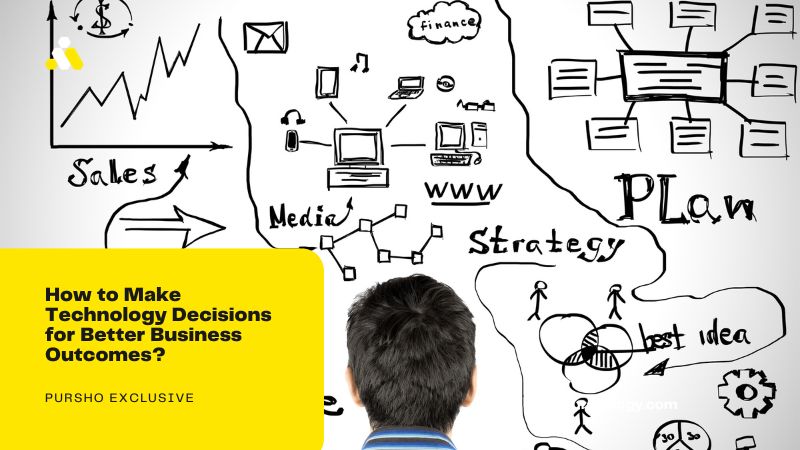In the fast-paced landscape of modern business, technology is a driving force behind innovation, efficiency, and ultimately, success. However, the abundance of options and the rapid evolution of tech solutions can make choosing the right technologies for your business a daunting task. At Top Rated Home Products, we recognize the importance of strategic technology decisions in achieving better business outcomes. In this guide, we explore key considerations and steps to help you navigate the tech terrain and make informed choices that propel your business forward.
Define Your Business Objectives
Before delving into the world of technology, it’s crucial to have a clear understanding of your business objectives. Identify the specific challenges you aim to address, goals you want to achieve, and areas where technology can make a tangible impact. Whether it’s improving operational efficiency, enhancing customer experiences, or staying ahead of industry trends, aligning technology decisions with your business goals is the foundation for success.
Assess Your Current Technological Landscape
Take stock of your existing technological infrastructure. Understand what systems and tools are currently in place, their strengths, and any limitations they may have. A comprehensive assessment provides insights into potential gaps and opportunities for improvement. This evaluation sets the stage for informed decision-making, ensuring that new technologies complement and enhance your existing setup.
Consider Scalability and Future Growth
Technology decisions should not only address immediate needs but also accommodate future growth. Consider solutions that are scalable and adaptable to evolving business requirements. This forward-thinking approach prevents the need for frequent overhauls and ensures that your chosen technologies can grow alongside your business, contributing to long-term success.
Research and Stay Informed
The tech landscape is dynamic, with new innovations emerging regularly. Stay informed about the latest trends, advancements, and industry best practices. Leverage reputable sources, attend conferences, and engage with industry communities to stay abreast of technological developments. We are committed to providing up-to-date information on technologies to empower your decision-making process.
Align with Industry Standards and Regulations
Different industries have specific standards and regulations governing the use of technology. Ensure that your technology choices comply with these standards to avoid legal and compliance issues. This is particularly crucial in areas such as data security, privacy, and industry-specific regulations. Technology featured prioritizes adherence to industry standards, providing a reliable foundation for your business operations.
User-Friendly Interface and Training
The success of any technology implementation depends on user adoption. Choose technologies with user-friendly interfaces that minimize the learning curve for your team. Additionally, invest in proper training to ensure that your staff can effectively utilize the new tools. Technologies often prioritize user experience, contributing to smoother integrations and quicker realization of business benefits.
Evaluate Total Cost of Ownership (TCO)
While upfront costs are essential to consider, evaluating the total cost of ownership provides a more comprehensive view of the financial impact of a technology decision. This includes not only the initial purchase or implementation costs but also ongoing maintenance, support, and potential upgrades. Features technologies with transparent pricing structures, allowing you to make decisions based on a holistic understanding of costs.
Seek Feedback and Testimonials
Explore the experiences of other businesses that have implemented the technologies you are considering. Look for testimonials, case studies, and user reviews to gain insights into real-world applications. Accurate reviews and testimonials for technologies, provide you with valuable feedback from businesses that have already navigated the path you are considering.
Integration with Existing Systems
Seamless integration with your current systems is paramount to avoid disruptions and ensure a cohesive workflow. Evaluate how prospective technologies can integrate with your existing infrastructure, minimizing downtime and maximizing efficiency. The technologies featured often come with compatibility assurances, facilitating a smoother integration process and reducing the likelihood of operational hiccups.
Vendor Support and Reliability
The reliability of your technology vendors is as critical as the technology itself. Research the reputation and customer support services of potential vendors. Opt for vendors with a track record of reliability, timely updates, and responsive customer support. Emphasizes technologies from reputable vendors, providing you with a selection that prioritizes reliability and ongoing support, ensuring a positive and sustainable technology partnership for your business.
Conclusion
Making informed technology decisions is a strategic imperative for achieving better business outcomes. By aligning technology choices with your business objectives, staying informed, and leveraging technologies, you can navigate the tech terrain with confidence, ensuring that your business remains at the forefront of innovation and competitiveness.




